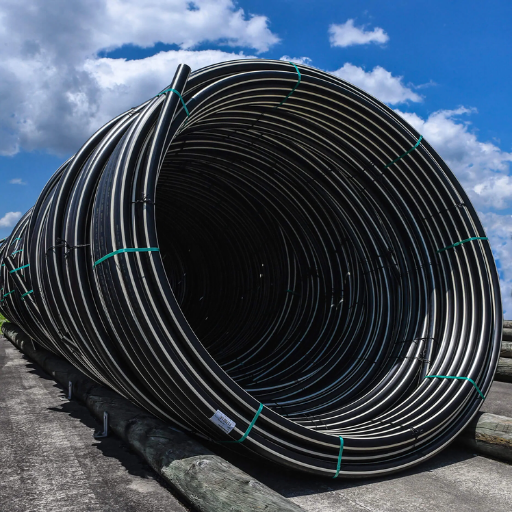Polyethylene (PE) sewer pipes are becoming popular for modern plumbing and wastewater management systems because of their many advantages. This article will discuss the essential aspects of PE pipe systems, such as what they are made up of, how they can be installed, and the long-term gains. With this comprehensive guide covering everything from understanding why polyethylene is better than other traditional materials to investigating the latest industry standards and regulations, readers should have all it takes to make informed decisions about their sewer system. The following article shall furnish insights for appreciating the importance of PE sewer pipes in contemporary infrastructure if you are a seasoned practitioner in the field or just interested in knowing more about these cutting-edge conduits.
What is PE Sewer Pipe?
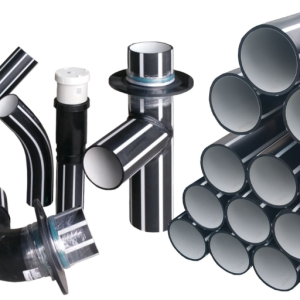
Image source: https://www.civilpipes.com.au/
Polyethylene (PE) sewer pipe is one plastic piping constructed from high-density polyethylene material. This specific type of piping is used instead in sewage and wastewater systems, hence being lightweight yet rigid compared to traditionally used clay or concrete. Corrosion, chemical, and environmental stress crack resistance are commonly known features of PE sewer pipes, making them ideal for underground applications. Different sizes are available, and they can be quickly joined through heat fusion and mechanical means, leading to a tight-fit system without any leaks. PE sewer pipes offer substantial durability and ease of installation benefits for modern sanitary engineering projects.
Introduction to Polyethylene Pipe
Various infrastructure projects have widely accepted polyethylene pipe due to its remarkable qualities and adaptability. It is light, thus allowing for easy transportation and installations, besides being highly resistant to chemicals and environmental elements, which guarantees durability for different applications like water supply and sewage systems. Being flexible, polyethylene pipes can adapt to ground movements, reducing the possibility of breaking. Also, advances in manufacturing processes have resulted in high-performance PE pipes that meet industry requirements, therefore offering assurance of their endurance and effectiveness to end users. Polyethylene pipe is a cost-effective solution for municipalities and industries to increase their focus on sustainable development by aligning with modern infrastructural demands.
Types of PE Pipe Used in Sewer Systems
Based on my observations, there are several types of plastic sewer pipes. Firstly, High-Density Polyethylene (HDPE) plumbing is most commonly used because it is solid and resilient. They work well with gravity-fed systems since they are installed without seams that would cause leakage. Secondly, I discovered that Medium-Density Polyethylene (MDPE) fittings are usually used under less stressful conditions to balance flexibility and pressure-handling capacity. Finally, PE4710 and PE100 tubing materials are admired for their excellent resistance against any environmental strain plus chemicals, thus making them suitable choices for sewer lines in cities worldwide. Each type has its unique advantages, ensuring that design engineers can select the best option tailored to specific project requirements.
Applications of PE Sewer Pipe
Their inherent properties and advantages allow polyethylene (PE) sewer pipes to be used in various applications. They are typically employed in residential and commercial sewage systems for efficient groundwater drainage and waste transportation. In addition, they are used in stormwater management systems because of their flexibility and corrosion resistance, which increase lifespan and reduce maintenance costs. Again, these pipes are used during rehabilitation projects where PE lines replace the traditional ones to enhance flow characteristics and prolong service life. Last but not least, municipalities install PE pipes using trenchless technology methods like horizontal directional drilling (HDD) without interrupting other activities on the surface while laying new pipelines. In summary, the adaptability and the durability qualities of polyethylene sewer pipe make it suitable for modern infrastructure needs.
What are the Benefits of Using HDPE Pipe for Sewers?
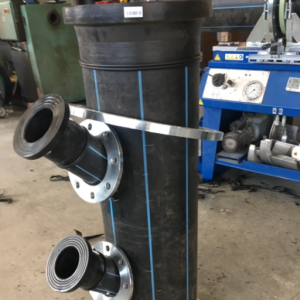
Sewer applications have several benefits for high-density polyethylene (HDPE) pipes. First, their corrosion resistance is excellent, making them serve longer, reducing failure chances and repair costs afterward. The second advantage is that HDPE pipes are lightweight and flexible, thus making them easy to handle when installing, especially in restricted areas. Their joints welded by melting form an integral structure that minimizes leaks and improves hydraulic efficiency. Additionally, HDPE does not deteriorate under environmental stresses such as soil movement and consolidation, ensuring continuous structural reliability. Finally, HDPE is adaptable to trenchless installation methods that reduce digging up damages and guarantee stable surfaces, making it a pragmatic choice for contemporary sewer systems.
Durability of High-Density Polyethylene
From my experience, I can say that High-Density Polyethylene (HDPE) is quite long-lasting, mainly because it is resistant to corrosion and environmental factors. HDPE pipes, for instance, have been shown to withstand tremendous amounts of stress without cracking or breaking even under challenging conditions, as they are known for their resistance to temperature fluctuations and soil movements. This makes the seamless fusion-welded joints important in maintaining the system’s integrity and minimizing leakages. As a result, this durability increases service life while reducing maintenance costs, making HDPE an appropriate sewer material choice. Modern infrastructure should consider HDPE because of its performance and lengthiness.
Maintenance and Service Life of HDPE Pipe
High-density polyethylene (HDPE) pipes require little maintenance due to their inherent strength and corrosion resistance. Therefore, regular inspections should be carried out so that no physical damages or blockages occur with time. According to industry standards, properly installed HDPE pipes can last beyond 50 years when used in normal conditions. Also, within the lifetime of these pipes, changes like ground movement or other environmental elements must be checked as they might affect their integrity. In addition, proper installation methods, such as ensuring sufficient bedding and support, contribute significantly towards extending service life, thus reducing repair needs, including replacing worn-out ones where necessary. Generally, keeping up with HDPE pipes is simple and cost-effective over long periods if handled well throughout their lives.
Resistance to Corrosion and Chemicals
From my experience, the outstanding characteristic of HDPE pipes is their high resistance to corrosion and a wide variety of chemicals. On exposure to harsh conditions, HDPE does not rust or corrode like traditional materials such as metal or concrete. I have also noticed that this corrosion resistance is extended to many different chemicals making it suitable for use in moving water, wastewater, and even aggressive industrial fluids. Additionally, the innocent nature of HDPE means they don’t react with substances being transported through them, ensuring that not only does the pipe remain intact, but also people are protected from hazardous materials. This feature has significantly reduced failures and leaks, making me choose HDPE over other alternatives in many fields.
How to Install PE Sewer Pipe?
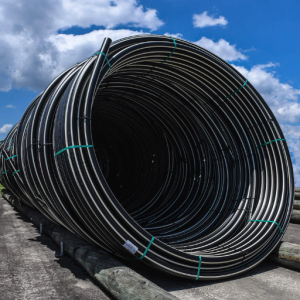
Installing PE (Polyethylene) sewer pipe requires careful planning and execution to ensure a long-lasting and efficient system. First, gather all necessary materials and tools, including the pipe, fittings, trenching equipment, and a proper fusion welding tool if you use butt-fusion methods.
- Excavate the Trench: Dig a trench at least one foot deeper than the pipe’s diameter. It should also be wide enough to accommodate both the pipe and its fittings. For instance, in this case, sewer installations require certain depths depending on codes.
- Prepare the Bedding: Use sand or gravel bedding that will support your pipe without damage. Ensure there are no sharp objects on the bedding surface and that it is adequately compacted.
- Lay the Pipe: Start putting PE pipes into trenches while observing manufacturers’ specifications regarding joints. However, when fusions take place between segments, their heating must be carried out correctly during connection processes.
- Maintain Proper Gradient: Always ensure that you lay out your pipe with the correct slope (usually 1-2% grade) to facilitate the easy passage of wastewater. To determine whether a slope along the length of a tube is appropriate, one can employ either a grade pole or a leveler.
- Backfill: Once the pipe is in position, backfill the trench, taking care not to leave any sharp objects and compacting it well enough to support the pipe without any voids.
- Test the Installation: After installation, do either a pressure test or visual inspection to detect leaks or wrong bends.
- Final Touches: Lastly, make the necessary repairs to the surface and mark all access points for easy maintenance.
These steps will help you achieve efficient installations of PE sewer pipes that will serve you over an extended time while still maintaining their ability to work effectively.
Trenchless Installation Methods
Trenchless installation methods are novel tactics for installing and repairing underground utilities with fewer aboveground interruptions. These approaches are instrumental in urban areas where cutting large trenches can cause significant disruption and harm existing infrastructure.
- Horizontal Directional Drilling (HDD): This is a method where a horizontal borehole is drilled along a predetermined path, and then a pipe is pulled through the hole. It is widely used for putting new pipes under roads, rivers, or other obstructions without affecting the surface.
- Pipe Bursting: In this method, an old pipe is destroyed while simultaneously laying down another one of similar or greater diameter. A bursting head is pulled through the old pipe, breaking it apart so that a new pipe can replace it without extensive digging.
- Slip Lining: Under this approach, a smaller-diameter pipe is put into an existing larger one. The gap between these pipes might be filled with grout for added strength; such rehabilitation not only improves the durability of the old conduit but also extends the lifespan of the overall installation.
Using trenchless techniques means quicker installations at lower costs and lesser environmental effects associated with traditional digging methods.
Fusing Techniques for Leak-Free Joints
Fusing techniques are essential to prevent any leakage during pipe installations. From my research, I found out three main ways:
- Butt Fusion: In this case, both ends of two sections of pipes are melted by heating until they become molten and connected to make one solid joint. For thermoplastic pipes, this provides a perfect connection that does not come apart quickly.
- Electrofusion: During this process, an electrofusion fitting with built-in heating elements is used. When an electrical current runs through it, the fitting melts, thereby bonding both pipe and fitting together, creating a strong joint whose chances of leakage are minimal.
- Socket Fusion: This entails heating the ends of the pipe and a fitting until they soften, after which you insert the former into the latter. After cooling off completely, it becomes a solid joint that does not leak under any given condition and, hence, can be applied in various applications.
These techniques also improve the overall performance of the pipeline system aside from ensuring a reliable seal. Consequently, we can mitigate leakage risk and achieve installation integrity by adopting these fusing methods.
Common Installation Challenges and Solutions
Quite a few challenges can be met when it comes to pipe installation. However, understanding the different problems can go a long way in providing practical solutions. The following section discusses everyday complexities and ways of mitigating them:
- Variations in Soil Type: Different soils pose different risks during installation. To avoid shifting during and after installation, extra support structures may be required for loose, sandy, or unstable soils. In this regard, a thorough geotechnical assessment should be carried out before the start of the project.
- Weather Changes: Adverse weather, like heavy rain or extreme temperatures, may affect installation timelines and materials. Monitoring weather forecasts and scheduling installations during appropriate conditions helps anticipate contingencies. Furthermore, using durable materials can facilitate resistance to unfavorable weather.
- Equipment Breakdowns: Whenever tools fail to operate as expected, there is potential for delays and increased financial implications. Regularly inspecting tools used for an installation task before commencing work minimizes the risk of sudden malfunctions. It is also advisable to buy reliable machines.
If tackled using proactive measures, these everyday challenges will make pipeline installations operate more smoothly and efficiently.
What are the Differences Between HDPE and PVC Pipe?
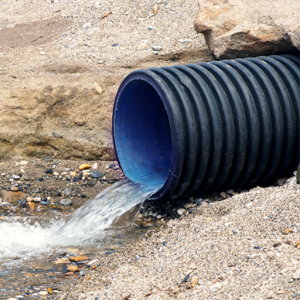
High-density polyethylene (HDPE) pipes and Polyvinyl Chloride (PVC) are two frequently used pipework types with characteristic features that determine their suitability for use on various projects.
- Material Composition: HDPE is made from petroleum products through thermoplastic processing, which makes it flexible and resistant to impact, while PVC is produced from vinyl compounds, rendering it rigid, strong, and durable.
- Flexibility: These tubes have a low stiffness modulus that allows them to deform when subjected to ground movements, thus making them suitable in areas prone to seismic activities. Rigidity defines PVC’s strength, such that under stress, it might crack easily.
- Installation Method: The join between HDPE pipes is achieved by heat fusion, which ensures no leakage, while PVC pipes are commonly connected through solvent cementing, although improper techniques can result in weaker joints.
- Chemical Resistance: Both PVC and HDPE resist certain chemicals, but HDPE is better at withstanding a wide range of solvents and acids. Therefore, it has become more acceptable for use in harsher environments.
- Costs: Regarding price, HDPE pipes tend to be more costly than PVC alternatives, although lower maintenance requirements and a longer lifespan may justify this.
Choosing between HDPE or PVC pipes hinges on specific project requirements such as environmental conditions, budget limitations, and long-term performance expectations.
Material Composition and Properties
Material properties of HDPE and PVC pipes are worth exploring in detail. A significant feature of High-Density Polyethylene (HDPE) is its high strength-to-density ratio, which makes it highly resistant to impact and wear. Being flexible, it can bend without breaking; this is good in varying soil conditions and during thermal expansion. Conversely, rigid nature and high tensile strength are the characteristics of polyvinyl chloride (PVC) that make it suitable for use in demanding load-bearing abilities. It also possesses a lower coefficient of thermal expansion than HDPE, making it dimensionally more stable when exposed to temperature fluctuations. Both materials have excellent chemical resistance, although HDPE has higher cracking resistance and better resistance towards other environmental stressors, significantly improving its performance under severe conditions. In summary, selecting these options relies on certain factors, namely flexibility, durability, and the chemical environment used in the application.
Performance in Sewer Applications
I have researched how HDPE compares to PVC in terms of their use in sewers and realized that they are both commonly employed but with different benefits. These incredibly flexible and leakproof conduits make them perfect for areas where the ground moves around. This reduces the chances of pipe bursting due to pressure, especially if you consider sewer systems. Then again, PVC tubes are generally inflexible and easy to put up where there is stability. Smoother surfaces reduce friction loss, guaranteeing improved flow rates. Finally, a choice between HDPE or PVC for sanitary sewers comes down to such factors as the type of soil, installation methods, and long-term expectations from a pipeline system.
Cost and Maintenance Considerations
There are several considerations regarding their costs and maintenance when comparing HDPE and PVC pipes. By and large, initial expense is viewed as higher for HDPE mainly due to its manufacturing process and installation requirements, but the fact that it lasts a long time and has low maintenance demands can offset these costs over time. Per contra, HDPE pipes exhibit lower maintenance needs and require fewer replacements due to their resistance to corrosion as well as biofouling, while PVC pipes may have lower upfront costs but could often result in high maintenance expenses because they are brittle; hence, they crack more quickly, especially under severe environmental conditions. The final judgment on an organization should not rely on its purchase price but also on total life cycle costs, including future upkeep charges, if any.
What to Consider When Choosing PE Pipe for Sewer Systems?
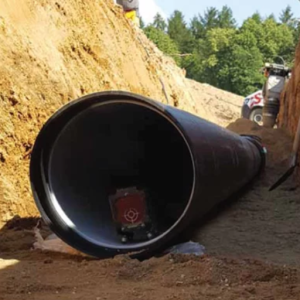
When selecting PE (Polyethylene) pipe for sewer systems, there are some vital factors to consider. This begins with understanding the environmental conditions, such as soil type, temperature fluctuations, and possible chemical exposure, which can affect pipe performance and durability. Additionally, hydraulic requirements like flow rates and pressure needs should be considered so that the selected pipe can meet operational demands. Further, this encompasses an evaluation of the installation procedure, such as the equipment required or technique used, since it influences both cost and efficiency. Furthermore, one should look at long-term performance characteristics like resistance to corrosion or impact, which would help determine future maintenance requirements. Finally, this involves compliance with local regulations and standards, ascertaining that the chosen PE pipe meets relevant codes to ensure the safety and reliability of any concerned party.
Diameter and Pressure Ratings
Understanding the diameter and pressure ratings is essential when selecting an appropriate PE pipe for sewer systems. The specific requirements of my project, such as expected flow rates and the pipe’s pressure range, are also considered. I usually see that diameter allows efficient fluid transportation without excessive losses due to friction. In terms of pressure ratings, I typically rely on the nominal pressure classification of the pipe, which shows its ability to withstand internal pressures without failing. Surge pressures, temperature changes, and similar issues must be factored in since they impact how these pipes work over time. When looking at these aspects, my main goal is to select a PE pipe that will provide reliability and durability in sewer applications.
Compatibility with Existing Pipeline Systems
When integrating new PE pipes into existing pipeline systems, consider material compatibility because different pipes can react adversely when connected. Some things that should be considered are the age and material of the existing system and the chemicals or fluids being transported through it. Transition fittings may need to be used so that there is no seepage and tight connections are made during the fitting process. Another tip would be to talk with manufacturers or engineers about compatibility and installation methods, which will minimize downtime while ensuring the integrity of your system. There should also be a routine check-up mechanism for identifying any problems arising from compatibility challenges eventually brought about by time durations.
Environmental and Regulatory Compliance
When installing PE pipes, I always prioritize local, state, and federal pipeline construction and operation laws. This usually involves applying for permits and being confident that my selected materials meet specific environmental criteria. In addition, I assess the potential impact on the environment, such as sedimentation, water quality, and ecosystem disruption, and then initiate proactive strategies to mitigate these risks. To keep informed about best practices, I regularly consult trusted sources, participate in industry workshops, and interact with environmental experts. Not only does this commitment help me maintain compliance, but it also demonstrates my commitment to sustainable practices in pipeline projects.
How Does PE Pipe Compare to Other Pipe Materials?
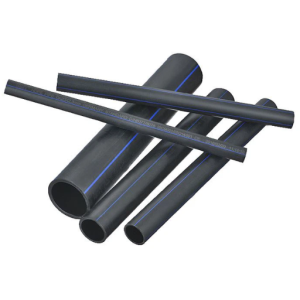
PE pipe has several distinguishing features compared to other materials like PVC, ductile iron, or steel. Firstly, it is very flexible and resistant to cracking; hence, it can be installed in rugged terrains or environments. Equally important is its corrosion resistance and chemical compatibility, enabling it to handle a wide range of fluids without compromising its functionality. Moreover, lower friction losses are commonly observed in PE pipes, contributing to improved flow efficiency in water distribution systems, for example. On the other hand, ductile iron or even steel may require protective coatings so they do not rust, thus generally increasing maintenance costs. Furthermore, PE pipes can be easier to install due to their lightweight nature, reducing labor costs incurred when hiring people and reducing project completion times. Although each material has merits, PE pipe is typically preferred for different applications because of its durability, flexibility, and cost-effectiveness.
PE vs. Ductile Iron Pipe
Several key factors come into play when comparing PE (polyethylene) pipes to ductile iron pipes. For instance, polyethylene pipelines are lightweight and highly flexible, making their installation easier on different terrains and reducing the need for extensive support structures. On the other hand, ductile iron pipes are much more robust and stand up to higher pressures but have a greater weight and often require more complicated installation methods. PE outperforms ductile iron in corrosion resistance as it doesn’t rust or disintegrate by chemicals. However, in some cases, Ductile Iron Pipes can last longer if they are well maintained, making them suitable for specific conditions only. Also, cost is another essential factor to be considered; compared to Ductile Iron pipes, the price of purchase and maintenance at large, PE pipes tend to be relatively cheaper and hence used in most project work that may require this kind of materials instead of others.
PE vs. Traditional Sewer Pipe Materials
Some critical aspects have been identified when determining whether polyethylene (PE) pipes offer advantages over conventional sewer pipe materials like clay, concrete, and PVC. The flexibility requirement is essential for installations on locations influenced by ground movement. This attribute makes it difficult for such sections to crack easily because of its high resistance against cracking.PE pipes have superior flexural strength than clay and concrete counterparts, which tend to be brittle and fail under tensile stresses. Additionally, they weigh less, thus making transportation less challenging and easier during installation, significantly reducing the overall costs associated with construction projects. Traditional materials, especially concrete, may get corroded or infiltrated with time. Furthermore, the compatibility of PE with chemicals enables it an ideal material conveying wastewater as well as storm water that do not cause deterioration of pipeline system even due exposure harsh environmental conditions. Therefore, various elements will influence PE versus traditional sewage pipe material selection, such as soil condition, the method of laying pipe, and long-term maintenance.
Advantages of PE Pipe Systems
As I found out while searching through various sources, polyethylene (PE) pipes have several benefits over traditional pipe materials. The first thing is that PE pipes are incredibly light, meaning they can easily be handled and installed; hence, it will significantly reduce labor costs. Secondly, by being flexible, these tubes allow absorption of ground movement and reduce the risk of crack formation, making them remain in service longer. Additionally, its resistance to corrosion and a wide range of chemicals make PE pipes require less maintenance during their useful lives. Also, I have found that these pipes can carry structural integrity even under extreme pressures, thus suiting them for different uses, such as in sewage and water conveyance systems. Overall, PE pipes are advantageous because they save money and time when used to solve specific problems.
Reference sources
- Waste Water Polyethylene Pipe – Pars Ethylene Kish
- DriscoPlex® 4600 / 4700 Series HDPE Sewer Pipe – Chevron Phillips Chemical
- HDPE Water & Sewer – JM Eagle
Frequently Asked Questions (FAQs)
Q: What are the main uses of PE sewer pipes?
A: PE sewer pipes are primarily used for sanitary systems, sewer force mains, and wastewater applications. They are also suitable for potable water, irrigation, and drainage systems.
Q: What are the differences between HDPE and PE pipes?
A: The primary differences between HDPE (High-Density Polyethylene) and ordinary PE (Polyethylene) pipes are their physical properties and applications. HDPE pipes are more durable, corrosion-resistant, and have a longer life expectancy than ordinary PE pipes. HDPE products are commonly used in high-pressure water and sewer mains.
Q: Why is HDPE pipe considered resistant to corrosion?
A: HDPE pipe is corrosion-resistant because it is made from high-density polyethylene material, which does not react with most chemicals. This makes it ideal for transporting gas, wastewater, and other corrosive substances.
Q: How cost-effective are PE sewer pipes?
A: PE sewer pipes are cost-effective due to their long life expectancy, reduced maintenance costs, and ease of installation. They are also lightweight, which reduces transportation and handling costs.
Q: What fittings are required to install HDPE pipes?
A: To install HDPE pipes, various fittings such as couplings, elbows, tees, and reducers are required. These fittings help create a homogenous and leak-free pipeline system.
Q: Can PE pressure pipes be used for potable water?
A: PE pressure pipes can be used for potable water supply systems. They are safe for transporting drinking water due to their resistance to corrosion and the absence of harmful chemicals.
Q: What are the advantages of using HDPE pipes for sewer and wastewater applications?
A: HDPE pipes offer several advantages for sewer and wastewater applications, including resistance to hydrogen sulfide gas, flexibility, and the ability to withstand high pressures. They are also less prone to cracking and have a longer life expectancy.
Q: How flexible are HDPE pipes compared to other materials?
A: HDPE pipes are highly flexible compared to other pipe materials. This flexibility allows them to be coiled for easy transportation and installation, especially in trenchless applications like slip-lining.
Q: What is the life expectancy of PE sewer pipes?
A: PE sewer pipes typically have a life expectancy of over 50 years, making them a durable and reliable choice for long-term infrastructure projects.
Q: Are there any specific applications where PE pressure pipes are preferred?
A: PE pressure pipes are preferred in high-pressure resistance applications, such as water mains, irrigation systems, and slurry transport. Their durability and flexibility make them ideal for these demanding environments.



